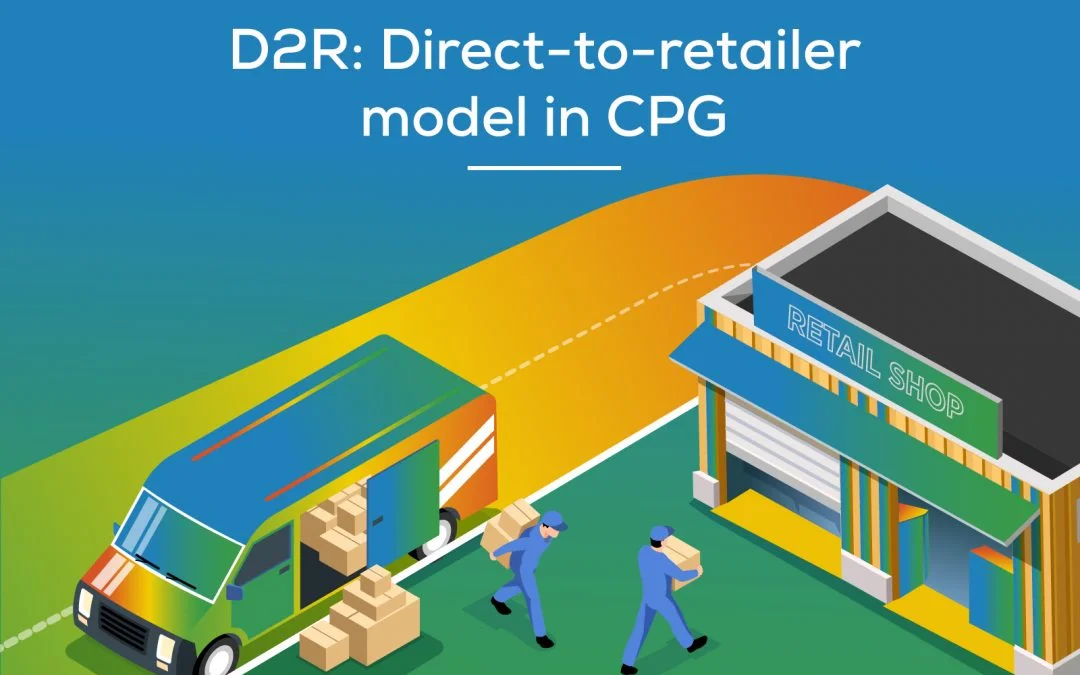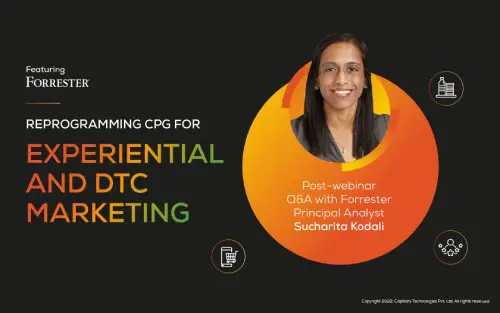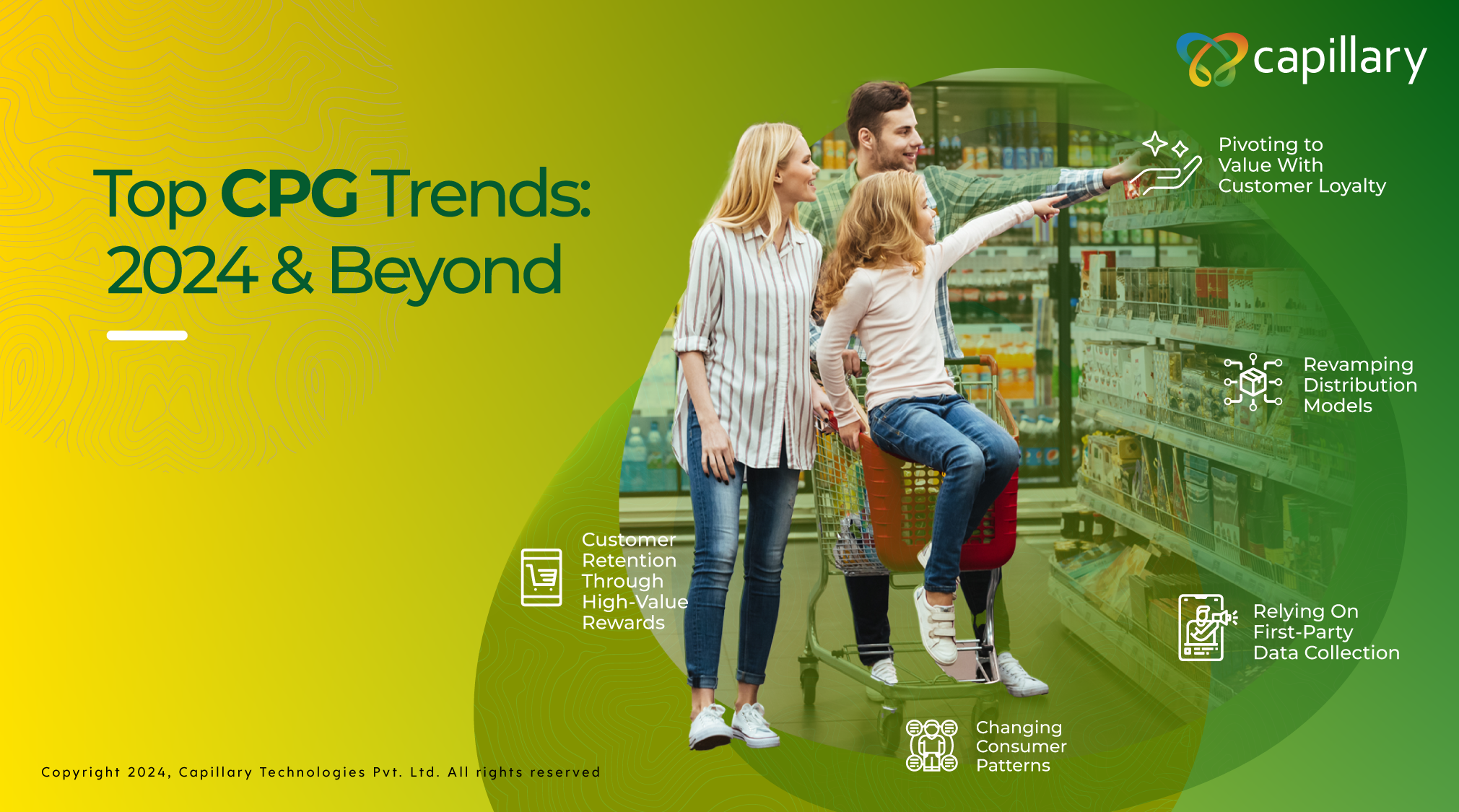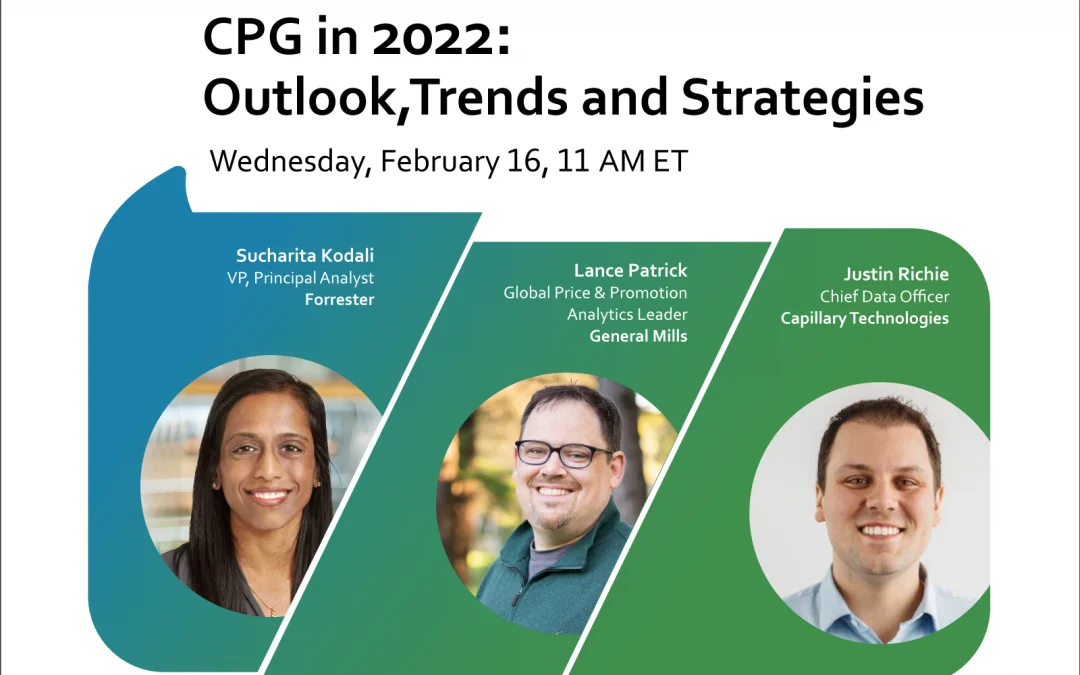- Design industry shaping loyalty programs
- Integrate easily and go live quicker
- Deliver hyper-personalized consumer experiences
Capillary acquires US-based Brierley+Partners Read more >
Capillary named a Leader in The Forrester Wave™: Loyalty Technology Solutions, Q1 2023 Report Read more >

While the D2R (direct-to-retailer) model was a formidable force even prior to COVID-19, it surreptitiously became a superpower for the consumer packaged goods (CPG) industry during lockdowns. With the surge in demand for essentials, the CPG supply chain underwent rapid transformation underscoring the importance of hyperlocal convenience store pick-ups to ease ecommerce fulfillment challenges. Thus, strengthening the long-term ties between CPG manufacturers and retailers through loyalty channels has never been more crucial. But what does this post-pandemic D2R model entail, and how does it benefit leading CPG brands? Let’s decode this further.
To understand D2R, we first need to look at the traditional supply chain model. Traditionally, in the case of CPG brands, the products are first sent by the manufacturer to the wholesaler and the distributor before reaching the retailer and, then, finally the consumer. These multiple middlemen who intervene in the distribution process, hinder brands from interacting directly with their two key sales drivers – local retailers and end-consumers.
This painstaking networking and distribution process has been revolutionized by digitization to create a value-driven model in CPG, leading to the new-age D2R (direct-to-retailer) and D2C (direct-to-consumer) pathways. While D2C has been adopted at a wide scale through online commerce, retailers and their hyperlocal convenience stores too play a crucial role in mitigating fulfillment obstacles. There was a lot of demand sensing an immediate action required from retailers during lockdowns, as in the case of the CPG industry – it didn’t make sense to sell all fast-moving goods online. The retailers’ role became especially indispensable. This is primarily for two reasons.
D2R is essentially the pathway that allows for a direct licensing contract between brand owners and retailers – eliminating middlemen who squeeze margins.
Once a D2R agreement is effective, the retailer becomes the seller of the licensed merchandise. Products often also get manufactured and then sold directly by the retailer, who becomes responsible for their in-store marketing, while paying a royalty to the brand owner. Businesses and retailers are, thus, coming together to foster healthy growth for both parties. While businesses benefit from the increased margin, private-label push reduced product development/delivery time, retailers ultimately reap increased profits by building their own enterprises in collaboration. This is precisely where the role of building loyalty programs to reward retailers for their own growth as well as the licensor’s penetration becomes crucial. But, first, let’s look at the D2R model more closely within the purview of CPG brands.
Direct-to-retailer deals allow for long-term associations that prevent CPG products from going out of stores with the highest footfall. In the wake of massive supply chain disruptions, while enterprises are struggling to meet their D2C fulfillment goals, established CPG businesses innovated heavily through existing D2R relationships.
These CPG giants wanted to offer new products or improve the formulation of existing ones during the pandemic. But, without retailers, gathering customer intelligence for product innovation is tricky for fast-moving brands since they are primary storehouses for varied data points. For CPGs, the growing need for new and advanced health and wellness-related products after the pandemic meant collaborating with retailers to gather effective customer expertise that determined their course. Establishing the right relationships with the right retailers proved crucial to get access to retailers’ inside intelligence as well as have proactive conceptual discussions for the new launches.
If a direct-to-retail property is underperforming, retailers will generally try changing the product in some way (the design or material, for example) before taking it off the shelf. If it is forced to remove it then the chances are it will look for other properties from existing partners. Once a retailer partnership is formed, it generates incremental value for long periods and is self-sustaining with the right set of rewards in place.
The enduring benefits of D2R are clear in the CPG industry, and so the reliance on retailers will remain despite D2C growth. To ensure the long-term relationships between CPG brands and the convenience stores, there needs to be sufficient incentivization through digital communication channels. Most licensors believe that retailers may not be committed to them beyond the initial push-off phase where they are merely establishing new product lines. This fear can be eliminated effectively and seamlessly through D2R loyalty programs that not only reward retailers but establish consistent relationship-building between the owners and licensees.
A loyalty channel activation can not only enable rewards for retailers but also provide CPGs with the relevant customer insights needed. Brands can then anticipate, quantify and predict future purchase trends.
A singular retailer communication and rewards portal, that shares updates on the CPG owner’s performance, new launches, and other relevant moves, facilitate trust building to encourage further collaboration. It also becomes the loyalty channel that provides the brand owner with the relevant customer insights it needs from retailers. Brands can then anticipate, quantify and predict future purchase trends. PepsiCo did this to effectively engage with 40,000 convenience stores at once while incorporating a customizable loyalty program into its proprietary retailer platform. Such programs include gamified retailer surveys, partner rewards, perks, tokens, and much more. To learn more about efficient ways of launching D2R rewards for your CPG brands, get in touch with our experts at Capillary Technologies.

March 28, 2022 | 4 Min Read
With more than one-third of consumers continuing to switch b

January 5, 2024 | 4 Min Read
It has become critical for CPG brands to get a 360 degree vi

February 17, 2022 | 4 Min Read
The explosion of data and digitization has curiously made th